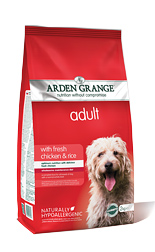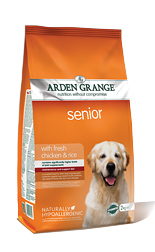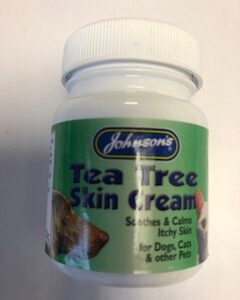Description
Analytical Constituents: Crude Protein 25%, Fat Content 15%, Crude Ash 7%, Crude Fibres 2.5%, Calcium 1.1%, Phosphorous 0.75%, Omega-3 0.50%, Omega-6 3.18%.
Composition: Chicken, (chicken meat meal 27%, fresh chicken 5%), rice 26%, maize, refined chicken oil, beet pulp, chicken digest, whole dried egg, krill, yeast, whole linseed, minerals, prebiotic FOS, prebiotic MOS, yucca extract, glucosamine, MSM , chondroitin, cranberries, nucleotides.
Additives (per kg)
Nutritional Additives
Vitamins: Vitamin A 18,000 IU, Vitamin D3 1,350 IU, Vitamin E 240 IU.
Trace Elements: Zinc chelate of amino acid hydrate 500mg, Copper chelate of amino acid hydrate 100mg, Manganese chelate of amino acid hydrate 67mg, Calcium iodate anhydrous 2.4mg, Selenised Yeast (inactivated) 65mg, Antioxidant (rosemary extract).
Feeding Guide
The breed, age, activity level and temperament of your dog will influence the amount of food required. The quantities shown in the chart below are for guidance only. Always ensure fresh, clean drinking water is available.
Recommended Feeding Chart
|
Using the Feeding ChartsThe Arden Grange feeding charts will give an estimation of the daily feeding quantity based on your cat or dog’s weight. It is important to remember however that these figures are guidelines only, and there are several factors to be taken into account when assessing your pet’s nutritional requirements : – Activity level Temperament (stressed animals burn off more calories than relaxed ones) Metabolism (every animal is an individual with his or her own speed of metabolism; this means that 2 dogs of the same age, breed and weight could have different daily calorie requirements) In order to provide the correct portions, it is also helpful to assess your pet’s appetite, visual appearance and stools. Whilst poo watching does not sound particular pleasant, it is one of the best indicators of health. Increased frequency of passing faeces, production of large quantities of stools of loose motions are often frequent signs that an animal is receiving more food than he or she requires. It is important to obtain an accurate weight for your cat or dog, and also to weigh out the food. Guessing on both accounts gives a large margin of error. |
|||||||||||||||||||||||||||||||||||||||||








